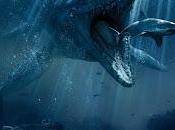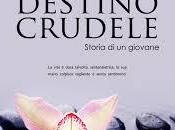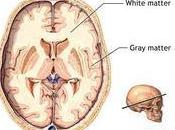Oggi intervistiamo Ann Mansolino giovane fotografa statunitense, scoperta per caso in uno dei miei soliti full immersion nella rete.

Parlaci di te, Ann, spiega ai nostri lettori chi sei. Tell us about yourself, Ann explains our readers who you are.
I am an American photographer, based in California. My work investigates issues of memory, personal and family history, and identity. My photographs are constructed portraits and self-portraits that give visual form to lived internal experience, and explore the relationship between the internal self and external ideas of past, present, identity, and place. My work has been exhibited in solo and group exhibitions across the United States, as well as in Slovenia, Guatemala, the UK, Japan, Singapore, and Canada.
In recent years, I have taught photography in California, Ohio, and Michigan, worked in Ireland, taught English in Russia, and taught writing and photography in Singapore, and traveled extensively. In order to make my art a greater priority in my life, I recently left my most recent teaching job, and am thus currently exploring other ways of supporting myself and my photography.
Sono una fotografa americana, che vive in California. Il mio lavoro indaga i temi della memoria, della storia personale e familiare, e dell’identità. Le mie fotografie sono costituite da ritratti e autoritratti che danno forma visiva all’esperienza interiore vissuta, ed esplorano il rapporto tra il sé interiore e le idee esterne del passato, presente, identità e luogo. I miei lavori sono stati esposti in mostre personali e collettive negli Stati Uniti, in Slovenia, Guatemala, Regno Unito, Giappone, Singapore e Canada.
Negli ultimi anni, ho insegnato fotografia in California, Ohio e Michigan, lavorato in Irlanda, ed insegnato inglese in Russia, ho insegnato scrittura e fotografia a Singapore e viaggiato molto. Al fine di rendere la mia arte come maggiore priorità nella mia vita, di recente ho lasciato il mio lavoro di insegnamento e quindi sto attualmente esplorando altre vie per me e la mia fotografia.
Cos’è la fotografia per Ann Mansolino? E cosa senti di dover fotografare? What is the picture for Ann Mansolino? And what do you feel about where to photograph?
I photograph in order to understand my own self and what it means to be human in the world. My images function like a symbolic autobiography that depicts not what particular events looked like, but rather what they felt like, internally. Photographing in this way provides a means by which I can search for and locate meaning and give form to the emotional and psychological texture of the human experience.
In order to photographically explore this notion of the interior self through constructed symbol and metaphor, I place objects in the landscape that often function like temporary installations, created solely for the purpose of being photographed, and perform actions over and over, which become rituals that are seen only by the camera. My images are shot on medium or large format black and white film, and are printed as gelatin silver prints in a traditional darkroom.
My photographs are about interior spaces – emotional spaces and psychological spaces – yet depict actual physical locations in front of the camera. I tend to photograph in empty landscapes, barren fields, lakes, deserts, and other places with no evidence of the contemporary world. They are spaces that could be in the past or present, with no features that anchor the image in any specific time or geographic location. I like the way these empty locations can function as metaphors for the self in the world, the way they allow interior and exterior worlds to mirror and collapse into one another.
Io fotografo per capire me stessa e ciò che significa essere umani nel mondo. Le mie immagini sono come un’autobiografia simbolica che non raffigura solo particolari eventi come sembra, ma piuttosto ciò che si sente, come ed internamente. Fotografare in questo modo fornisce un mezzo attraverso il quale posso cercare e trovare il significato e dare forma alla struttura emotiva e psicologica dell’esperienza umana.
Al fine di esplorare fotograficamente questa nozione del sé interiore attraverso il simbolo costruito e della metafora, posso collocare oggetti nel paesaggio, che spesso funzionano come installazioni temporanee, create al solo scopo di essere fotografate e di eseguire azioni più e più volte, fino a diventare rituali che si vedono solo dalla telecamera. Le mie immagini sono su medio o grande formato in bianco e nero, pellicola e vengono stampati come stampe su gelatina d’argento in una camera oscura tradizionale.
Le mie fotografie sono spazi interni emozionali e spazi psicologici – che raffigurano luoghi fisici reali di fronte alla telecamera. Io tendo a fotografare paesaggi vuoti, campi aridi, laghi, deserti e altri luoghi senza prove del mondo contemporaneo. Sono spazi che potrebbero essere del passato o presente, senza caratteristiche che ancorano l’immagine a qualsiasi momento specifico o posizione geografica. Mi piace il modo in cui queste posizioni vuote possono funzionare come metafore del sé nel mondo, il modo in cui permetto che mondi interni ed esterni a specchio si collassano l’uno nell’altro.


Sono autobiografiche le tue fotografie? I autobiographical your photos?
My images are deeply autobiographical, though they depict myself and my life symbolically rather than literally. Often, I am the person in the images as well, but not always: sometimes, I have used models who stand in for me instead. Since the face of the person in the image is rarely visible, even friends who have known me for years often can’t tell which images are actually of me and which are not. I find this intriguing, as I really do see the entire series of images as an extended self-portrait, even when I’m not the one literally in the image. It is somehow always about self, even though it’s not always a literal representation of self. One thing I’ve learned about through this project is the flexibility and malleability of self, both as model for the camera and as concept.
Le mie immagini sono profondamente autobiografica, anche se rappresentano me stessa e la mia vita simbolicamente piuttosto che letteralmente. Spesso, sono la persona nelle immagini, ma non sempre, a volte ho usato modelli. Anche perchè il volto della persona nell’immagine è raramente visibile e anche gli amici che conosco da anni, spesso dicono che non sanno quali immagini mi rappresentano e quali no. Trovo questo intrigante, vedo l’intera serie di immagini come un autoritratto, anche se io non sono quella nell’immagine. E’ in qualche modo sempre una rappresentazione di sé, anche se non è sempre letterale. Una cosa che ho imparato a conoscere attraverso questo progetto è la flessibilità e malleabilità del sé, sia come modello per la fotografia che come concetto.


C’è una serie fotografica, Thresholds, che è suddivisa in tre parti/tempo. Parlaci del progetto e della sua evoluzione. There is a series of photographs, Thresholds, which is divided into three parts / time. Tell us about the project and its evolution.
I have been working on the Thresholds series since 2000. I began creating these images when I was going through a difficult time in my life. Thus, early in the series, the photographic self is dissolving and diaphanous, reflecting my belief at that time that the photographs I made felt more real than I did. The images provided a needed sense of certainty and solidity at a time when I couldn’t find such things internally. That’s not where I am with my life anymore (fortunately), but the realization that photography can give voice to the parts of oneself and one’s life that are more abstract and difficult to articulate through other means was very powerful, and has led me to continue to work in a symbolic, poetic, narrative style since then.
In my more recent images, the uneasy interaction between the individual and the landscape has become more prominent, and ideas have shifted toward memory, regret, belonging, possibility, and the idea of home. The work has become lighter in tone and more playful, as well… reflecting the changes I’ve gone through, while still retaining continuity in style and approach. I believe that there’s value in continuing this exploration of identity indefinitely, across the span of my lifetime. I wonder how the photographs will evolve visually in 20 or 50 or more years, as I go through different phases of life, and as ideas of aging and mortality take on a different weight in my experience?
Already, though, the series has become so large that I have had to divide it into sections. The current three parts correspond to the different locations within the United States that I’ve lived in while making these photographs: Ohio, Michigan, and California. Major changes in geography have resulted in differences in the look and feel of light and landscape, and thus provided natural groupings among the photographs. I believe that additional natural breaks or groupings will occur in this series as it continues to evolve in the future, that it might take on the form of a long visual poem, with multiple stanzas, each able to stand on its own, but each gaining complexity and meaning from its contribution to the whole.
Lavoro sulla serie Thresholds dal 2000, quando ho iniziato a creare queste immagini stavo attraversando un momento difficile della mia vita. Così, all’inizio della serie, il sé fotografato si dissolve e diventa diafana e ciò riflette la mia convinzione, di quel momento, che le fotografie fatte le sentivo più reali di me. Le immagini mi hanno fornito un senso di necessaria certezza e solidità in un momento in cui non riuscivo a trovare queste cose dentro di me. Questo non è ciò che sono io nella mia vita (per fortuna), ma è la consapevolezza che la fotografia può dare voce a parti di se e alla propria vita che sono astratti e difficili da raccontare con altri mezzi e mi ha portato a continuare a lavorare in stile poetico, simbolico e narrativo da allora.
Nelle immagini più recenti, l’interazione del disagio tra l’individuo e il paesaggio è diventato più forte e le idee si sono spostate verso la memoria, il rimpianto,l’ appartenenza, la possibilità e l’idea della casa. Il lavoro è diventato più leggero, più giocoso e riflette i cambiamenti che ho vissuto, pur mantenendo una continuità di stile e di approccio. . Io credo che sia importante continuare questa esplorazione d’ identità a tempo indeterminato, per tutto l’arco della mia vita. Mi chiedo come le fotografie si evolveranno fra 20 o 50 anni, cosa vedrò attraverso le diverse fasi della vita e come le idee dell’invecchiamento e della mortalità assumeranno un peso diverso nella mia vita?
Già la serie è diventata così grande che ho dovuto dividerlo in sezioni. Le attuali tre parti corrispondono alle diverse città degli Stati Uniti dove ho vissuto: Ohio, Michigan e California.gli importanti cambiamenti geografici hanno portato differenze di aspetto grafico della luce e del paesaggio e quindi al raggruppamento naturale delle fotografie. Credo ci saranno raggruppamenti naturali supplementari che si verificheranno in questa serie che continuerà ad evolversi nel futuro, assumendo la forma di un lungo poema visivo, con più strofe, ciascuna in grado di stare in piedi da sola, ma guadagnando complessità e significato nel suo contributo al tutto.


Nelle fotografie ci sono oggetti, simboli. Parlacene. In the pictures there are objects, symbols. Tell us about.
Each image has as its focal point a very significant object, gesture, or symbol – like a ladder or balloons or a typewriter in the landscape – usually something out of the ordinary, out of place, and heavy with metaphorical significance. When thinking about making new photographs, I do a lot of writing and drawing, and this process is essential in clarifying the ideas and symbols I’m thinking about. Sometimes, the images emerge fully formed. For instance, the images of the ladder emerging from the lake – I kept drawing that symbol over and over until I realized that I just had to go build myself a winding, curving ladder out of tree branches and put it in a lake to make photographs. The resulting images were very much what I had envisioned. At other times, I go to a place and start exploring it with the camera. I figure out how I fit into it, what other objects are needed in it. Often, even when I arrive at a location with a specific photographic plan, the final image is somewhat different, is something that evolves intuitively as I work.
Ogni immagine ha come punto focale un oggetto molto significativo, gesto o simbolo – come una scala o palloncini o una macchina da scrivere nel paesaggio – di solito qualcosa fuori dall’ordinario, fuori dal luogo, pesante, con un significato metaforico. Quando penso di fare nuove fotografie, scrivo e disegno, questo processo è essenziale per chiarirmi le idee e i simboli a cui sto pensando. A volte le immagini emergono già decise dalla mia mente. Ad esempio, le immagini della scala che emerge dal lago – ho disegnato più e più volte il progetto, ma ho capito dopo che dovevo essere io a costruire ciò che avevo immaginato cioè la curvatura dei rami dell’albero e metterlo nel lago per fare le fotografie. Le immagini emerse poi sono state proprio quelle che avevo immaginato. Altre volte, vado in un posto ad esplorare con la macchina fotografica. A capire come adattarmi ad esso e agli oggetti necessari . Spesso, quando arrivo in un luogo con un piano specifico fotografico, l’immagine finale è un po ‘diversa, qualcosa si evolve intuitivamente nel lavoro.

Il progetto, Signs from God, come nasce? The project, Signs from God, how did?
“Signs From God” is a photographic project that documents the messages on church signs across America. These signs are a common part of the American cultural landscape, and their messages – which address topics as diverse as family, sex, pop culture, politics, consumerism, war, the price of gas, and the afterlife – both reflect and seek to influence America’s values at any given time, often mimicking the language and visual appearance of consumer advertising. At times, especially in relation to current events, the signs of different churches contradict one another, while all simultaneously claiming to be speaking for God. I have driven across the country photographing signs in many cities and towns, and have collected hundreds of images. The signs depicted in these photographs are a uniquely American means by which a nation commodifies religion and markets it to itself.
“Signs from God” è un progetto fotografico che documenta i messaggi sulle insegne delle chiese in tutta l’America. Questi segni sono una parte comune del panorama culturale americano e i loro messaggi – che hanno indirizzi e temi diversi come la famiglia, il sesso, la cultura pop, la politica, il consumismo, la guerra, il prezzo del gas, e l’aldilà – sia per riflettere che per cercare d’influenzare i valori americani in un dato momento, spesso imitando il linguaggio e l’aspetto visivo della pubblicità . A volte, soprattutto in relazione ad eventi attuali, le insegne di diverse chiese si contraddicono l’una con l’altra, mentre tutti hanno la pretesa di parlare per voce di Dio. Ho girato tutto il paese fotografando insegni in molte città e paesi, raccogliendo centinaia di immagini. I segni raffigurati in queste fotografie sono un mezzo tipicamente americano dove una nazione mercifica la religione e la commercializza.




Sei ispirata da certi fotografi del passato o del presente? Are you inspired by certain photographers of the past or the present?
I think rather than having been inspired by certain photographers who influenced my work, I started making images, and then discovered other photographers whose work resonated with my own, who seemed to be following a parallel path, and have found those connections to be affirming and encouraging. Ralph Eugene Meatyard, Clarence John Laughlin, Duane Michals, Francesca Woodman, and Arthur Tress all have a similar use of the figure as an embodiment of something internal and symbolic, something beyond the literal, that connects to what I do. I often find inspiration from outside of photography as well – from sources as varied as literature, or surrealist painting, or medieval art objects. All of these things help me think about ways of depicting the truth beneath the surface of life, and allow me to see my work as contributing to a long tradition of powerful images that use the symbolic and narrative potential of art to explore the mysteries of being human.
Penso piuttosto di essere stata ispirata da alcuni fotografi che hanno influenzato il mio lavoro, quando ho cominciato ho scoperto che altri fotografi avevano fatto lavori di risonanza come i miei, sembravano quasi un percorso parallelo ed ho trovato connessioni incoraggianti. Ralph Eugene Meatyard, Clarence John Laughlin, Duane Michals, Francesca Woodman, e Arthur Tress tutti hanno un uso simile della figura come incarnazione di qualcosa di interiore e simbolica, qualcosa che va oltre il letterale e che si collega a quello che faccio. Spesso trovo l’ispirazione al di fuori della fotografia, come pure da fonti diversi come la letteratura, la pittura surrealista, oggetti d’arte medievali. Tutte queste cose mi aiutano a pensare a modi di rappresentazione della verità sotto la superficie della vita e mi permettono di vedere il mio lavoro come un contributo per una lunga tradizione di immagini potenti che utilizzano il potenziale simbolico e narrativo dell’arte per esplorare i misteri dell’essere umano.
Mostre future? L’italia? Shows the future? Italy?
I currently have some images included in Fototropía in Guatemala (www.fototropia.org). In December, 2013, I had a solo exhibition entitled “Freeze, Thaw, Begin Again” at D’CLINICstudios in Slovenia. Some of the photographs in that show were frozen inside blocks of ice… which slowly melted during the exhibition opening. In addition, I continue to develop and add to the Thresholds series, as it is ongoing. While I do not have any new shows scheduled in the immediate future, I do continue to seek out opportunities to exhibit that body of work, and will continue to do so in the years to come.
You ask me about Italy. My family is originally from Italy, from a village in Campania. They immigrated to the United States in the 1920s. Unfortunately, by the time I was born, my family no longer spoke Italian, so I never learned the language. Still, my grandparents’ stories and photographs from Italy have been significant to me personally and artistically. In some of my photographs, I include old family images in an attempt to create a connection between myself in America now, and a past in Italy that I know is part of me, but that I can never fully understand…. I do hope to spend more time in Italy in the future, and to be able to connect more deeply to my family’s history and culture in the future. If I am able to exhibit my work in Italy at some point in the future, that would be a wonderful opportunity as well.
Al momento ho alcune immagini incluse in Fototropía in Guatemala (www.fototropia.org). Nel dicembre del 2013, ho fatto una mostra personale dal titolo “Freeze, Thaw, Begin Again” al D’CLINIC studios in Slovenia. Alcune delle fotografie in mostra sono state congelate all’interno di blocchi di ghiaccio, che lentamente si sciolgono durante l’inaugurazione della mostra. Inoltre, continuo a sviluppare e aggiungere materiale alla serie Thresholds, in quanto è un lavoro in corso. Mentre non ho alcuna mostra in programma nel futuro immediato, continuo a cercare opportunità di esporre il mio lavoro e continuerò a farlo negli anni a venire.
Mi chiedi dell’Italia. La mia famiglia è originaria dell’Italia, da una città in Campania. Emigrarono negli Stati Uniti nel 1920. Purtroppo quando sono nata, la mia famiglia non parlava più italiano, quindi non ho mai imparato la lingua. Eppure, storie e fotografie dei miei nonni in Italia sono stati significativi per me, sia personalmente che artisticamente. In alcune delle mie fotografie, includo vecchie immagini di famiglia, nel tentativo di creare una connessione tra me qui America oggi, e un passato in Italia, è una parte di me che non potrò mai comprendere appieno …. Spero di venire in Italia, in futuro e di collegare più profondamente la storia e la cultura della mia famiglia. Se poi riuscirò a fare una mostra dei miei lavori in Italia, in futuro, per me sarebbe una splendida opportunità.
Ann Mansolino web site: http://www.annmansolino.com/






